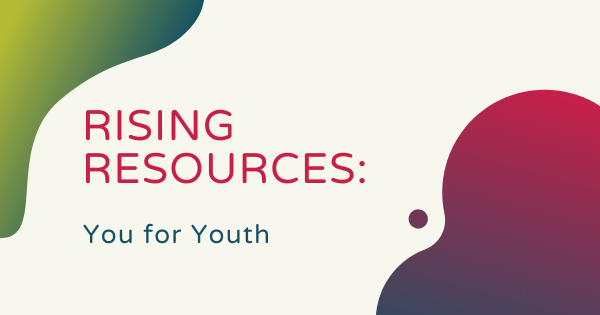This week, we’re taking the Eduporium Weekly in a slightly different direction and highlighting some of the best teacher blog posts that we’ve seen in the last year or two. We’re lucky to have (kind of) become a part of a fantastic online teacher community and love all of the content on sites like We Are Teachers, Edutopia, and more.
Teaching
Across today's schools, innovation meets inspiration and curiosity sparks boundless learning. In our STEM-focused education world, teaching will often be a truly exhilarating journey—even more so when fueled by key principles of science, technology, engineering, and math. In a 21st-century classroom, educators serve as navigators, igniting flames of inquiry and guiding children through intricate pathways of discovery. These days, each lesson is often a blend of hands-on experimentation, collaborative problem-solving, and critical thinking exercises. By implementing these teaching styles, teachers often better prepare the next generation of innovators and problem solvers. STEAM-focused educators in today's classrooms not only convey knowledge, but also facilitate exploration, encourage students to ask questions, challenge assumptions, and explore the world around them.
From coding and robotics to environmental science and mathematics, modern curricula are diverse and adaptive, mirroring the landscape of STEM. In a K-12 classroom, failure is not feared, but celebrated as a stepping stone towards greater understanding. Through trial and error, students learn resilience, perseverance, and that success can arise from perseverance in the face of challenges. Today's instructors beautifully understand this importance of their role in fostering inclusion and diversity in STEM fields. With teaching practices that prioritize equitable access to resources and opportunities, teachers can ensure kids feel empowered to pursue passions and contribute to their STEAM community. Explore the content on inspirational teaching approaches below to help unlock authentic growth in students. Together, we can inspire the next generation of scientists, engineers, and innovators to succeed.
-
Rising Resources | You for Youth + Professional Learning
This week as part of our Rising Resources blog, we’re introducing you to the highly teacher-oriented site, You for Youth. This website was created for educators to discover the resources and gain the knowledge they need to manage their 21st CCLC (century community learning center) program and make it the best after school experience possible. -
BIG Cyber Monday EdTech SAVINGS For YOU!
Rather than have two separate sales for Black Friday and Cyber Monday, we thought we’d just combine the two into one big, long, savings-filled event. So, all the savings you could get starting Friday at midnight are going to continue until Tuesday at midnight. Open the post to shop and save on brands like Snap Circuits, Makey Makey, and more. -
How Teacherpreneurs Can Teach Students Entrepreneurship Skills
The innovation in contemporary education is increasing every day. Schools are using more advanced technologies, like 3D printing, laser cutting tools, and maybe even drones to help impart those necessary skills for the future on their students. Among these key 21st century skills is entrepreneurship since the current gig economy is filled with new opportunities all the time. -
Eduporium Weekly | Artificial Intelligence and Education
Whether it’s recommending a new show to watch or automatically buying you tickets to see your favorite band, AI is getting scary smart scary fast. It’s even making its way into 21st century education and being used in K-12 schools and higher education across the world. So, what does that mean, how can we prepare, and why is this significant? -
Eduporium Weekly | Empowering All Teachers In The 21st Century
In 21st century education, teachers try to prepare students for a world with technology, hands-on work, and the unknown. Most teachers know about the importance of equipping students with the hard and soft skills they will need in the “real world” and it’s usually their lack of strong resources—not their quality of instruction—that interferes with this challenging process. -
Eduporium Weekly | Taking it Personal
Even with technology available, you might be wondering how on Earth teachers could provide each student with a meaningful personalized experience. Personalized education has become more than just a trend in our education systems, however. When teachers provide students with content and approaches that suit them best, students often find success. -
Eduporium Weekly | Why There Is Always Room To Grow
If students and teachers are not developing intellectually every single day, how are they going to succeed in today’s hands-on, project-based world? The importance of the constant presence of growth mindset in education is more important now than perhaps it ever has been—whether students realize it or not—and that’s why it’s our focus topic for this week’s post. -
Eduporium Weekly | EdTech—From Supplemental To Essential
For many teachers, using educational technology in the classroom is the norm. For the vast majority of today’s educators, however, it’s a headache-inducing afterthought. The fact is, however, that using technology to teach necessary concepts in a modern fashion has its advantages. The issue isn’t really with what teachers teach, but more with how they teach. -
Eduporium Weekly | Education And Revolutionized Readiness
So much has been made about the need for kids to learn with technology as early on as elementary school to prepare them for the real world. Many schools and districts, however, continue to rely on their longtime curricula despite evidence that shows innovation in education is highly beneficial for today’s youth.













